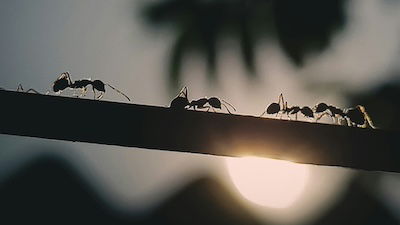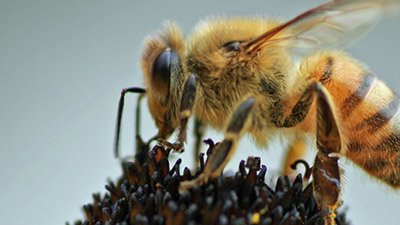Lessons from a Beetle
A team at the University of Leeds in England has engineered a spray nozzle that replicates the bombardier beetle’s (in)famous defense mechanism.
News Source
- Wired Science: “Scientists Mimic Beetle’s Liquid Cannon”
If you’ve been hanging out in creationist circles for some time, it’s almost a sure thing that you have heard of the bombardier beetle (made semi-famous by biochemist Duane Gish in his creation lectures of decades past). For those who aren’t familiar with this impressive (and dangerous!) little bug, here’s an explanation from chapter two of Gary Parker’s book Creation: Facts of Life:
One crucial mistake, of course, and “boom!” the would-be bombardier beetle blows itself up.
The bombardier is an ordinary-looking beetle, but it has an ingenious chemical defense mechanism. Imagine: here comes a mean ol’ beetle-eater, a toad, creeping up behind the seemingly unsuspecting beetle. Just as he gets ready to flash out that long, sticky tongue, the beetle swings its cannon around, and “boom!” It blasts the toad in the face with hot noxious gases at the boiling point of water, and coats the toad’s tongue with a foul-tasting residue. Now that doesn’t actually kill the toad, but it surely kills its taste for beetles! Pictures show the toad dragging its tongue across the sand trying to get rid of the foul taste.
Successful firing of the bombardier beetle’s cannon requires two chemicals (hydrogen peroxide and hydroquinones), enzymes, pressure tanks, and a whole series of nerve and muscle attachments for aim and control. Try to imagine all those parts accumulating by time, chance, and natural selection. One crucial mistake, of course, and “boom!” the would-be bombardier beetle blows itself up, and there’s surely no evolutionary future in that! Trial and error can lead to improvement only if you survive the error!
In another example of scientists taking design cues from nature (and ultimately nature’s Creator), a team at the University of Leeds in England has engineered a spray nozzle that replicates the bombardier beetle’s (in)famous defense mechanism.
Led by professor of thermodynamics and combustion theory Dr. Andy McIntosh, the team built a nozzle containing a 4/5 inch (2 cm) chamber—about the size of a toy army man’s gun—that can propel liquid an incredible 13 feet (4 m)! The nozzle can also create an extremely fine mist with droplets as small as 2 millionths of a meter. All this based on the bombardier beetle’s rear half!
Swedish Biomimetics 3000, which co-funded the project, believes the technology could be put to use in fuel injection, medical, and agricultural settings.
Also, the name Andy McIntosh may be ringing a bell for some of you readers. Prof. McIntosh is one of many professional research scientists who is also a Bible-believing, young-earth creationist (though we wish that phrase were seen as redundant!). You can read Dr. McIntosh discuss creation in a chapter from In Six Days, or you can watch and listen to him in such AiG DVDs as The Intricacies of Flight and Genesis, Babel & the Chinese Language.
Further Reading
For More Information: Get Answers
Remember, if you see a news story that might merit some attention, let us know about it! (Note: if the story originates from the Associated Press, FOX News, MSNBC, the New York Times, or another major national media outlet, we will most likely have already heard about it.) And thanks to all of our readers who have submitted great news tips to us. If you didn’t catch all the latest News to Know, why not take a look to see what you’ve missed?
(Please note that links will take you directly to the source. Answers in Genesis is not responsible for content on the websites to which we refer. For more information, please see our Privacy Policy.)
Recommended Resources

Answers in Genesis is an apologetics ministry, dedicated to helping Christians defend their faith and proclaim the good news of Jesus Christ.
- Customer Service 800.778.3390
- Available Monday–Friday | 9 AM–5 PM ET
- © 2025 Answers in Genesis





